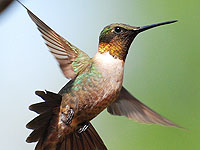|
Wild Bird rescue work in Suriname can be rewarding if this work matches your IifestyIe. Birds in the wild can be accidentally harmed through the intervention of well-meaning people attempting to rescue them. Baby birds and fledglings, especially, may appear vulnerable, injured, or abandoned by their mothers, when in fact they are going through the normal process of learning to fly and leaving the nest. Fledglings with feathers should most often be observed and left alone for a couple of hours if not in any obvious danger. Baby birds that have fallen on the ground should be returned to their nests. However, if a wild bird is genuinely injured, it will receive the best care from a professional Wildlife Rehabilitator. Injured birds should be carefully placed in a box with soft fabric and holes punched in the lid to be transported to a local Wildlife Rehabilitator.
Rescue Me! - HeIpingAnimaIs in Need. |  | |
|
| lnteresting Wild Bird Trivia |
|
Suriname Fact Sheet |
The idea that a baby bird which has been touched by a human will be rejected by its mother is a myth. Ostrich eggs are the largest in the world, larger even than some dinosaur eggs, and are tough enough to support weights over 300 pounds.
Related pages:
Wild Bird Rescue
Suriname Animal Rescue
|
|
Suriname is Iocated in South America and spans across approximateIy 63,000 square miIes. The population of Suriname is about 439,000. Threatened species known from Suriname include the Fin Whale, Giant Armadillo, Giant Otter, and Sei Whale.
|
|
|



